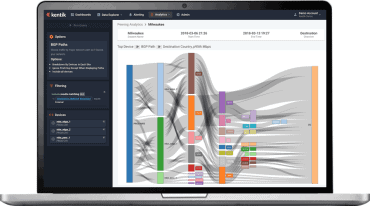
Companies will rely on data science-driven approaches to getting insights in real-time, at scale across the business, and will quickly push out that information to an omnichannel environment.
The largest, most lingering lesson that companies will take from the pandemic-laden years of 2020 and 2021 is the notion that significant, unpredictable change is constant. We’ve helped customers navigate unprecedented waters amid the pandemic: A seismic shift to eCommerce, inflation and extreme cost volatility, and supply chain disruption that created previously unseen inventory availability challenges. As a company, we helped customers find the smartest pricing, sales, and commercial strategies possible to help them retain and grow market share and improve margins. Increasingly, key factors include the need for more intelligence and real-time actions.
Moving forward into this year, I don’t foresee the pace of change slowing. Those who are prepared to act swiftly and smartly will be the ones to thrive. Here’s a look at what to expect.
See also: Your Customers Interact with Your Brand in Real-Time, It’s Time You Follow Suit
Trends to watch: Real-time, intelligence, and more
The three big trends to watch for in B2B are:
- The emergence of new ways to handle real-time price execution
- The mass exodus from spreadsheets and email as a means to share intelligence
- Mainstream adoption of price optimization and management software
Real-time price execution:
A lot goes on behind the scenes of the final price presented to a customer: cost, value, competition, relationship, order size, shipping, taxes, freight, and so much more. Historically, this unique blend of factors was calculated within the existing pricing system of record. However, the emergence of eCommerce has overwhelmed these systems, and they simply cannot keep up with the digital demand for pricing. As a result, P&L owners are seeking an alternative to the traditional pricing engine.
Sponsored Resource: Enhancing Intelligent Real-Time Monitoring with Streaming Analytics Using Real-Time Digital Twins [Download Now]In 2022, we’ll see a new breed of pricing engines emerge. Instead of clunky, monolithic software that makes it difficult to update pricing logic and architecturally difficult to provide real-time pricing, companies will increasingly adopt a third-party pricing engine that is cloud-native with a highly available API. By doing so, they can execute real-time pricing calculations against necessary pricing logic in response to calls from any commercial system, incorporate an unlimited number of disparate data sets into the pricing engine, perform complex calculations on demand, and enable real-time price delivery back into commercial systems.
Mass exodus from spreadsheets and email to share intelligence:
Perhaps surprisingly, many B2B companies rely on spreadsheets and email to share intelligence within the organization. This can be anything from cost data to pricing to business intelligence reports about customer spend to monthly inventory promotions — you name it.
It’s a curious phenomenon when you stop to consider how complexity and dynamic market conditions companies face. Whether it’s inflation and critical supply chain disruption today, the sharp acceleration of digital commerce in 2020, or even looking a few years back, the impact of tariffs. Disruption has been a constant drumbeat — one that’s not likely to change anytime soon.
In 2022 we’ll see companies stop relying on disjointed business intelligence tools and email to pass around information. The process is too slow to respond as quickly as the market demands, and sales reps tend to ignore these reports. Instead, they’ll lean on data science-driven software to help their teams make decisions faster, at scale across the business, and quickly push out that information in an omnichannel environment. By doing so, they can equip teams and digital channels to pivot on a dime to always have the latest, most relevant information at hand.
Widespread adoption of price management and optimization software:
One of the most oft-quoted facts about pricing – that a 1 percent improvement in price, assuming no loss of volume, increases operating profit by 11.1 percent – is nearly 30 years old (Harvard Business Review, October 1992). Yet, despite its measurable financial benefits, the B2B price optimization and management software category that emerged about one decade later is just beginning to enter the mainstream.
The demands of digital transformation coupled with significant advancements in the deployability and scalability of price optimization and management solutions have propelled pricing software into the mainstream. Now, companies can empower pricing teams to simplify onerous price management and administration tasks while delivering market-aligned dynamic pricing to maximize margin or revenue.
Innovation poised for a breakthrough: Acting in real-time
A decade ago, the concept of “big data” was a significant trend. Excitement and speculation abounded in terms of the exciting use cases. Data is often a company’s most valuable yet untapped asset. Five years later, “AI” was the next trend tsunami. Yet, today, I would venture that broadly the promises of both solutions have been vastly unfulfilled, but why?
Companies are sitting on a treasure trove of data, starting with their order and transaction data, including volumes of hard-to-use third-party data like cost indices and competitive data, and finally, unique data from new technologies like eCommerce and IoT. The challenge is finding a means to effectively use that data and operationalize AI models purpose-built to solve specific business challenges. In 2022, we’ll see innovation in the form of applications that make it easy to turn the knobs and pulleys on various commercial strategies, game plan the predicted financial impacts, and immediately impact commercial decisions across channels.
Investment opportunities
When we look at B2B software over the past 20 years, investors have found opportunities in ERP, CRM, CPQ, and eCommerce. These are all applications that make the execution of critical functions like resource planning, reporting, quoting, and digital self-service possible. The plumbing, if you will, of B2B commerce. The plumbing is helpful but requires fuel running through it. That fuel is mined from data and provides the real-time pricing, sales, and other commercial guidance that allows your company to grow profitably through each transaction in every channel. Once you have fuel and plumbing, a centralized command center is critical. This puts your business experts in the driver’s seat, updating prices in real-time as costs change, deploying inventory availability campaigns, adjusting eCommerce strategies, streamlining rebate management, pushing highly-targeted customer win-back campaigns, enabling the most efficient prospecting, and so much more.
In 2022, investors will find opportunities where the fuel and the control center are enabled within the plumbing of execution software. With all three factors in play, companies can power intelligent commerce more predictably, reliably, repeatedly, and profitably than ever before. This is where I predict the next wave of investment opportunities to come from.
Conclusion
Making predictions is notoriously tricky, especially after what we’ve seen in the past couple of years. But by keeping an eye on these trends, companies can put themselves in a position to succeed in 2022.
Sponsored Resource: Enhancing Intelligent Real-Time Monitoring with Streaming Analytics Using Real-Time Digital Twins [Download Now]




























